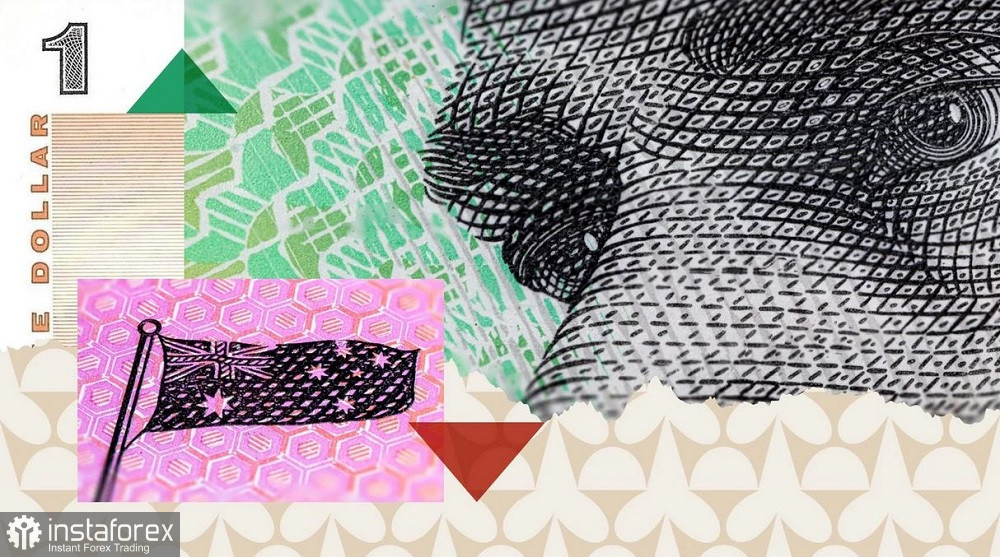The Australian dollar is actively losing ground today in response to the results of the RBA's November meeting. Despite the central bank ending its months-long pause and raising the interest rate by 25 basis points, the Aussie came under pressure. This was a widely anticipated decision and did not cause any "surprise." All the attention of AUD/USD traders was focused on RBA Governor Michele Bullock's rhetoric and the wording in the accompanying statement. Here, the Australian dollar found no support.
Leading up to the November meeting, experts assessed the probability of a 25-point interest rate hike at almost 100%. The central bank gradually tightened its rhetoric as if preparing the ground for the corresponding decision. The hawkish protocol of the October meeting and statements by the RBA Governor and her deputies had formed certain expectations among traders, which were fully realized today. However, other hopes regarding the Reserve Bank's future actions did not materialize.

In general, the price fluctuations of AUD/USD before and after the meeting reflect the trading principle of "buy on rumors, sell on facts." The pair was rising actively on rumors that the RBA would further tighten its monetary policy (for the first time since September, the Aussie tested the 0.65 figure). But as soon as the rumors became a fact, the pair made a 180-degree turn.
Notably, the Australian dollar suffered due to the absence of a single phrase in the accompanying statement—that "the regulator may need further tightening of monetary policy." In essence, this phrase was routine and did not carry any hawkish message. However, removing this wording sent a dovish signal. This move triggered price turbulence for the AUD/USD pair, naturally not in favor of the Aussie.
Instead of an affirming statement, the central bank now asks whether further monetary policy tightening will be required to return inflation to the target level. And it answers itself, stating that it will depend on incoming macroeconomic data and changing risk assessments.
In other words, the RBA has formally left the door open for an interest rate hike. However, given the removal of the key phrase from the final communique and the recent tightening of global financial conditions, it can be assumed that in the near future (in the coming several meetings), the Reserve Bank will maintain a wait-and-see position—at least until February when the first meeting of 2024 is scheduled. By that time, the central bank members will have data on inflation for the fourth quarter of 2023, which is likely to determine the future of the cash rate.
At the moment, the prevailing sentiment in the market is that the November rate hike will be the last in this cycle. The central bank is meticulously scrutinizing the wording of the accompanying statement, which is why the market's reaction to such significant changes in the verbal aspect is entirely justified. Furthermore, the regulator pointed out that the country's economic growth has already slowed to a two-year low (2.1%), and it will slow down even further next year (approaching 1%), partly due to the impact of the high interest rate.
Thus, the Reserve Bank of Australia, following the November meeting, raised the interest rate but voiced contradictory signals regarding the further prospects of monetary policy tightening. It can be said that the central bank has placed neither a period nor an ellipsis— rather, it's more like a question mark. This question will be answered by the report on Australia's fourth-quarter inflation, but it will only be published at the beginning of the next year. Until that moment, interim inflation reports for October, November, and December will be released. If they indicate an "in the green" territory, reflecting an acceleration in CPI, the question of a rate hike will return to the agenda, and the Australian dollar will begin to regain lost ground. In all other cases, the rise of AUD/USD will only be possible at the expense of the weakening greenback.
From a technical perspective, the AUD/USD pair is heading towards the support level of 0.6400, which corresponds to the lower line of the Kumo cloud on the D1 timeframe. The bears will likely push this target down, as well as the next price barrier at 0.6370 (the middle line of the Bollinger Bands on the same timeframe). In this case, the pair will be situated between the middle and lower lines of the Bollinger Bands, and the Ichimoku indicator will form a bearish "Parade of Lines" signal. Such a combination will indicate a preference for short positions. However, given the overall weakness of the greenback, sellers should exercise caution around the middle of the 63 figure—it is advisable to lock in sales and adopt a wait-and-see position in this price range.





















